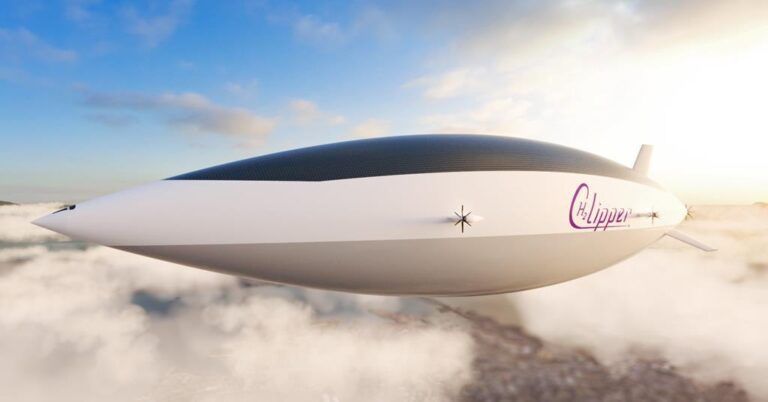US-based H2 Clipper has patented a swarming robotic manufacturing technology it intends to use to build its massive hydrogen-fuelled airships with.
According to Clipper, the robotic manufacturing technology, patented under the title “system, method and apparatus for airship manufacture using robotics”, can reduce the cost and time required to produce airships and other aircraft.
H2 Clipper is one of several companies around the world developing airships for cargo and passenger markets. The company, which was founded in 2011, plans for its 1,000ft long (305m) -long airships to begin commercial operations in 2029, transporting hydrogen fuel between production sites and distribution centers around the world.
Clipper plans for its hydrogen fuel cell-powered airships to cruise at 150mph (240km/h) and use hydrogen as the lifting gas. It expects to begin building a prototype this year and fly it for the first time in 2026.
Learning robots
However, a major engineering challenge for making these airships is their large size.
H2 Clipper founder and CEO Rinaldo Brutoco said, “When we finished designing the major structural components of our airship, we realized that something so massive would require a hangar 24 stories high and 1500ft long. We recognized that we could not build the airships of the future using a conventional assembly line.
“We therefore began to develop advanced robotic technology that utilized ambulatory and floor-mounted robots working in concert as a swarm to co-construct the exoskeleton of the airship.”
In addition, Brutco believes the application of machine learning and AI to the robots could be developed so the robots to teach themselves to optimize construction of the airships.
Licensing business model
Clipper is not the only other airship developer touting their vehicle’s potential to carry large amounts of cargo as a potential future application.
The FAA granted a special airworthiness certificate in September last year so that fellow US-based airship developer LTA Research can flight test its Pathfinder airship.
LTA Research also envisions its airships being used for zero-emissions air cargo transport, while French-Canadian company Flying Whales also wants to use hydrogen-fuelled airships to transport cargo such as timber.
Other airship developers include UK-based Hybrid Air Vehicles and Lockheed Martin-backed AT2 Aerospace.
H2 Clipper believes its swarm robotics manufacturing technology provides a way to efficiently construct airships and wants to license the technology out.
“The average time to construct an airship will drop to 12 months or less per ship depending on how many robots are assigned to each ship and “provide a viable economic path for hydrogen-powered flight that will greatly reduce the costs associated with the transport of liquid hydrogen and containerized freight”, it said.





